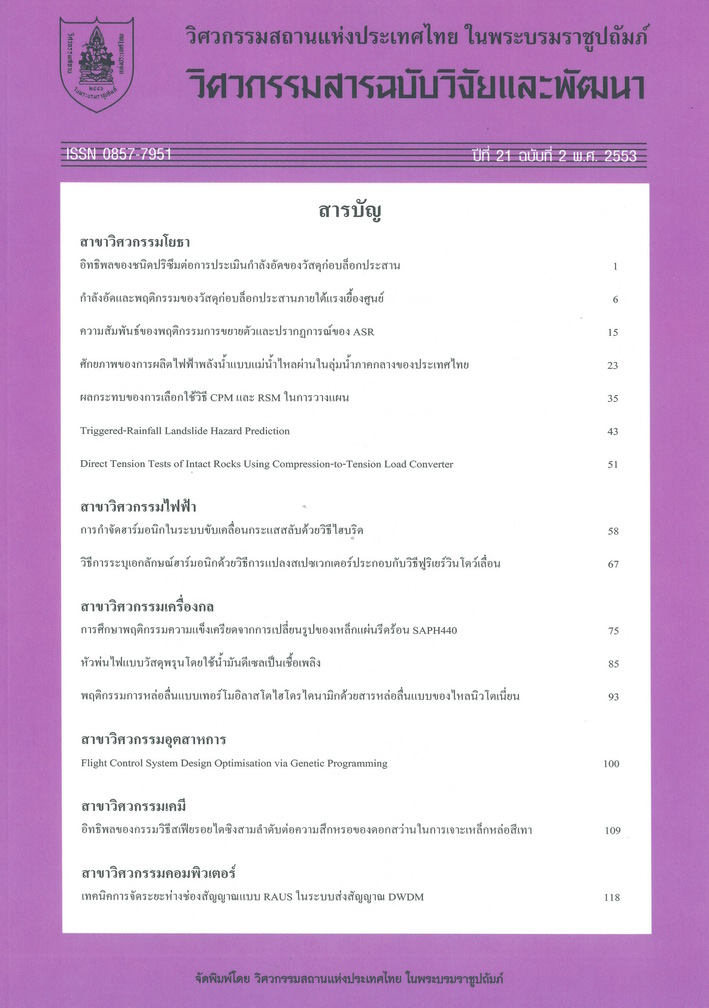Triggered-Rainfall Landslide Hazard Prediction
Main Article Content
Abstract
Thailand is one of many countries suffering from landslide problem due to heavy rainfall. Many people had loss their life and their casualties every year. The estimated value of economic loss is more than expectation. Landslide, in geotechnical engineering field, is problem of slope stability on unsaturated soil. In general, main causal factors of landslide contain static factors such as slope angle, geology and land use combined with dynamic factors and rainfall triggering factor. The slope stability is varied depend on water content in soil mass from rainfall. Whenever rainfall occurring, soil water content increased, soil shear strength decreased affect to slope instability and possible failure. This paper presents the method of landslide prediction from rainfall data in study area of Phuket of southern Thailand. Study area was classified according to static factors. Infinite slope model and probabilistic approach were used in stability analysis. Water content changing was calculated by 1D-flow finite difference method. Probability of landslide for each zone was calculated from rainfall data, consisting of recent 1 day rainfall and antecedent 3-days rainfall. Geographical Information System (GIS) is used as a tool for the analysis and presentation. Dynamic landslide hazard can be mapped and used for warning system. However, the verification of the results with the past landslides is needed to confirm for a particular location before giving warning system.
Article Details
The published articles are copyright of the Engineering Journal of Research and Development, The Engineering Institute of Thailand Under H.M. The King's Patronage (EIT).


